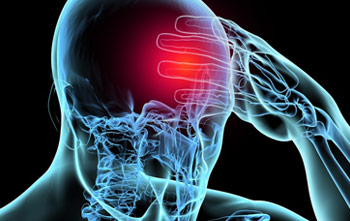Sign in or register for an account.

Introduction to Stroke Management
A stroke is defined as a brain attack, interfering with blood flow and oxygen to the brain. In the United States, stroke is the 3rd leading cause of death and the leading cause of disability. The estimated direct and indirect cost of stroke, for the year 2010, was $73.7 billion dollars. Fast forward nearly a decade, and that number grew to a global prevalence of stroke in 2019 of nearly 101.5 million people, with ischemic strokes occurring in nearly 77.8 million people. Additionally, there were a reported 6.6 million deaths attributable to cerebrovascular disease worldwide in 2019.
Approximately 795,000 strokes occur yearly, and can happen to anyone, regardless of race, gender, or age. An estimated two million brain cells die every minute during stroke, increasing the risk of permanent damage. According to the American Heart Association, stroke ranks No. 5 among all causes of death in the US, causing 147,810 deaths in 2018. Thus, it is important to be able to recognize the symptoms of a possible stroke, and to seek immediate medical care to reduce the risk of death or non-reversible disability.
In 2003, The Joint Commission launched its Primary Stroke Center Certification Program. Eight hours of annual stroke specific continuing education is required for the staff who comprise the CORE stroke team. Additionally, at least 80% of the Emergency Department staff is required to have knowledge of the stroke pathophysiology, presentation, assessment, diagnosis and treatment including thrombolytic therapy. Finally, Nurses on non-stroke units, where stroke patients are not routinely cared for, and ancillary staff should receive stroke continuing education to allow recognition of stroke signs and symptoms and activation of the organization’s emergency response processes. This course would be excellent for all healthcare providers, and assist hospitals seeking both initial and renewal of primary stroke center certification.
Questions? Check out our FAQs page and How Online IV Certification Works!
Objectives
Upon completion of this course, the participant will be able to
- Identify signs and symptoms of a stroke, and appropriate emergency treatment.
- Differentiate the difference between a stroke and a transient ischemic attack (T.I.A.).
- Describe the differences between modifiable and non-modifiable risk factors for stroke.
- Explain how lifestyle changes can reduce the risk of stroke.
- Calculate the appropriate dose of t-PA for treatment of ischemic stroke.
- List the appropriate members of a(stroke) rehabilitation team.
- Discuss the N.I.H. stroke scale and its use in evaluation of stroke severity.
- Describe measures to decrease the risk of a recurrent stroke (“secondary prevention”).
Curriculum
Chapter 1: Risk Factors
- Modifiable risk factors
- Non-modifiable risk factors
- Normal blood pressure parameters
Chapter 2: Signs and Symptoms
- Ischemic vs Hemorrhagic stroke
- Transient Ischemic Attack (TIA)
- Evaluation tools for stroke severity
- Time parameters for treatment
Chapter 3: Acute Stroke Care
- NIHSS
- Certified Stroke Centers
- NPO, IV therapy, preliminary lab work
- Hypoglycemic “stroke”
- Dysphagia screening
- Aspirin therapy at onset of stroke
Chapter 4: t-PA Therapy
- Infusion guidelines
- Inclusion and Exclusion criteria
- Administration of t-PA
- Complication potential: Intracranial hemorrhage
Chapter 5: Rehabilitation
- Types of stroke rehabilitation
- Members of the Rehabilitation Team
Chapter 6: Secondary Stroke Prevention
- Blood pressure control
- Diet
- Alcohol
- Tobacco Cessation
- Glycemic Control
- Stress Reduction
Chapter 7: Post-Stroke Complications
- Constraint Induced Movement Therapy (CIMT)
- Dysphagia
- Post-stroke vision changes
Chapter 8: Current Research and Advancement
- Desmoteplase (Bat vemon)
- Viprinex (Malayan pit viper)
- Caffeinol (caffeine and alcohol)
- Merci Retriever
Chapter 9: Resources and Case Study
- NIHSS Stroke Certification
- Glasgow Coma Scale
- Hunt and Hess Scale
- Modified Rankin Scale
- Barthel ADL Scale
- National Stroke Association
Chapter 10: References
- California Bill 241
- Implicit Bias in Healthcare
- What is Implicit Bias?
- Implications of Implicit Bias in Healthcare
- How to Reduce Implicit Bias
Price: $24.00
Contact Hours: 2

Course Author

Maureen Sullivan-Tevault
Maureen graduated nursing school in 1981 and has spent her years in the Emergency and Trauma field, including nursing positions as the Emergency Department Manager, Director of Staff Education, Trauma Coordinator, Cardiology Nurse Navigator, and Stroke Program Manager.
Read Full BioCourse Accreditation
Additional Accreditations:
Provider approved by the Florida Council of Dietetics and Nutrition, CE Provider #: 50-13256.
Provider approved by the Florida Council of Licensed Midwifery, CE Broker CE Provider #: 50-13256.
Provider approved by the Florida Board of Respiratory Care, CE Broker CE Provider #: 50-13256.